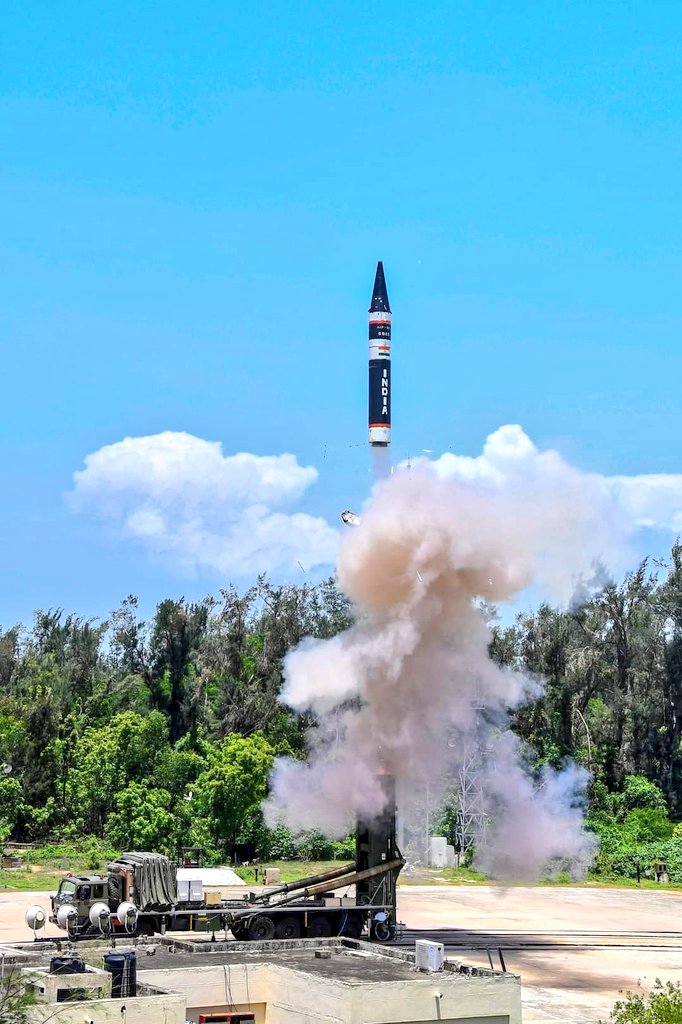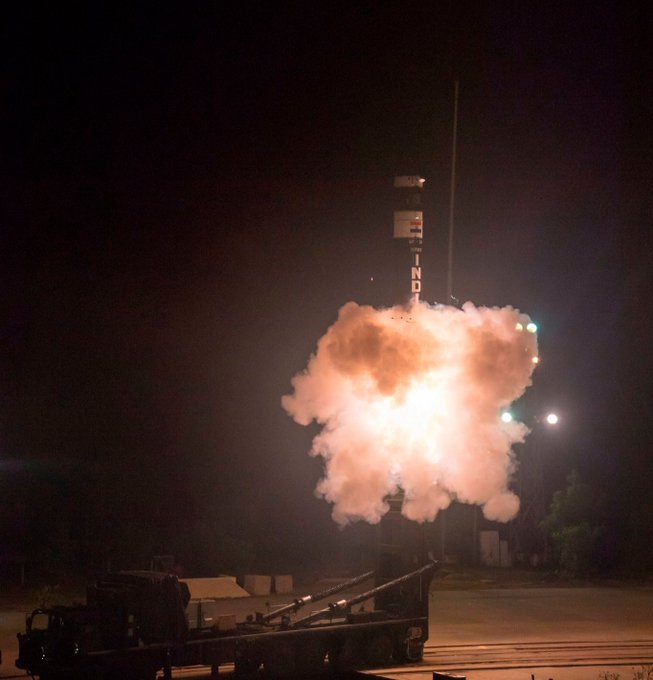India Overtakes Pakistan in Nuclear Warheads for First Time, Deploys Next-Gen Agni Missiles with MIRV Capabilities — SIPRI
As of January 2025, SIPRI estimates that India possesses approximately 180 nuclear warheads—an increase from 172 the previous year—compared to Pakistan’s steady arsenal of 170 nuclear warheads.
(DEFENCE SECURITY ASIA) — India has overtaken Pakistan in the number of operational nuclear warheads, according to the latest report by the Stockholm International Peace Research Institute (SIPRI), marking a significant shift in South Asia’s strategic balance.
As of January 2025, SIPRI estimates that India possesses approximately 180 nuclear warheads—an increase from 172 the previous year—compared to Pakistan’s steady arsenal of 170 nuclear warheads.
The figures place India slightly ahead of its nuclear-armed rival for the first time in recent years, signalling New Delhi’s ongoing investments in next-generation delivery platforms and strategic deterrence capabilities.
SIPRI’s annual yearbook further highlighted India’s development of new “canisterised” missile systems, which allow nuclear warheads to be pre-mounted and stored securely during peacetime, thus enabling faster response times and improving operational readiness.
These systems, notably the Agni Prime (Agni-P) and the MIRV-capable Agni-5, are believed to be capable of eventually carrying multiple warheads on a single missile—technologies typically associated with more advanced nuclear powers such as the United States, Russia, and China.
“India is believed to have once again slightly expanded its nuclear arsenal in 2024 and continued to develop new types of nuclear delivery systems,” the SIPRI report stated.
“India’s new ‘canisterized’ missiles, which can be transported with mated warheads, may be capable of carrying nuclear warheads during peacetime, and possibly even multiple warheads on each missile, once they become operational,” it added.

The Agni Prime, also known as Agni-P, is a new-generation medium-range ballistic missile (MRBM) developed by India’s Defence Research and Development Organisation (DRDO), intended to replace older Agni-I and Agni-II systems with a more mobile, survivable, and precision-capable platform.
Capable of striking targets at ranges between 1,000 to 2,000 kilometers, the Agni-P is equipped with composite motor casings, improved guidance systems, and advanced propulsion, making it significantly lighter and more maneuverable than its predecessors.
A key feature of the Agni-P is its “canisterised” launch system, which allows the missile to be stored and transported in a sealed, ready-to-launch container, greatly reducing launch preparation time and increasing survivability during peacetime and conflict scenarios.
While the Agni-P reinforces India’s tactical and regional deterrence, the Agni-5 represents a strategic leap forward in long-range strike capability and survivability against modern missile defence systems.
With a reported range of over 5,000 kilometers, the Agni-5 places all of China, parts of Europe, and potentially even northern Africa within reach of India’s strategic forces, thus reinforcing India’s position as a long-range nuclear power.
What sets the Agni-5 apart from previous platforms is its potential to be equipped with Multiple Independently Targetable Re-entry Vehicles (MIRVs)—a technology that allows a single missile to carry and deploy multiple nuclear warheads, each programmed to strike different targets.
This capability significantly enhances the missile’s destructive potential, overwhelms missile defence systems, and allows for more efficient use of nuclear assets in a retaliatory strike scenario.

MIRV technology also complicates the adversary’s missile interception calculations, as defence systems would need to track and neutralise multiple incoming warheads from a single missile, thereby diluting the effectiveness of layered air and missile defences.
DRDO has remained tight-lipped about the operational status of MIRV-equipped Agni-5 variants, but tests in recent years suggest that India is in advanced stages of integrating MIRV capability, possibly positioning Agni-5 as the crown jewel of India’s strategic arsenal.
Both Agni-P and Agni-5 form part of India’s broader doctrine of credible minimum deterrence, which emphasizes survivability, second-strike capability, and strategic autonomy without engaging in an arms race.
In a regional context, these developments come amid growing Chinese missile deployments along the Line of Actual Control (LAC) and Pakistan’s steady modernization of its short- and medium-range missile systems, particularly with platforms such as the Ababeel MIRV missile and Nasr battlefield nuclear weapons.
The deployment of canisterised, road-mobile, and MIRV-capable systems like Agni-P and Agni-5 adds significant operational flexibility to India’s Strategic Forces Command, ensuring both regional deterrence against Pakistan and strategic deterrence against China—two nuclear-armed neighbors with whom India has ongoing territorial disputes.
While India’s modest expansion has drawn attention in South Asia, SIPRI’s report emphasized that China’s nuclear build-up is by far the most rapid and substantial among all nuclear-armed states.
Beijing’s arsenal grew from 500 warheads in 2024 to an estimated 600 by January 2025, and the pace of growth is projected to continue at a rate of about 100 new warheads per year since 2023.

“By January 2025, China had completed or was close to completing around 350 new ICBM silos in three large desert fields in the north of the country and three mountainous areas in the east,” SIPRI noted.
“Depending on how it decides to structure its forces, China could potentially have at least as many ICBMs as either Russia or the USA by the turn of the decade,” it warned.
Despite this surge, SIPRI projected that even if China’s nuclear arsenal reaches a maximum of 1,500 warheads by 2035, it would still constitute only one-third of the current strategic stockpiles held by the United States and Russia.
Currently, the United States and Russia together maintain control over approximately 90 percent of the world’s nuclear weapons.
The report added that both superpowers kept their stockpiles relatively stable throughout 2024, but are actively pursuing modernization efforts that may eventually lead to larger and more diversified nuclear forces.

“If no new agreement is reached to cap their stockpiles, the number of warheads they deploy on strategic missiles seems likely to increase after the bilateral 2010 Treaty on Measures for the Further Reduction and Limitation of Strategic Offensive Arms (New START) expires in February 2026,” the report cautioned.
SIPRI’s latest findings underscore the shifting dynamics of nuclear deterrence in Asia, where India’s incremental growth, Pakistan’s status quo posture, and China’s aggressive expansion are reshaping the regional balance—and potentially setting the stage for new strategic recalibrations in the years ahead.
— DEFENCE SECURITY ASIA


Pakistan already have MIRV system in ababeel missile system